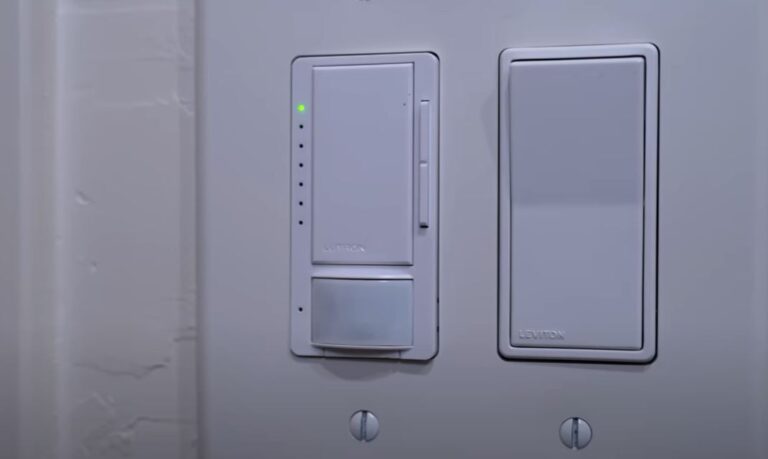How Smart Thermostats Help Save Energy
Smart thermostats have revolutionized home climate control by combining advanced technology with user-friendly interfaces to optimize energy use.
Unlike traditional thermostats, which require manual adjustments and operate on fixed schedules, smart thermostats leverage sensors, connectivity, and intelligent algorithms to adapt to user habits, environmental conditions, and energy-saving opportunities.
This comprehensive guide explores how smart thermostats contribute to energy conservation, their mechanisms, benefits, and real-world impact, supported by data and practical insights.
A smart thermostat is a Wi-Fi-enabled device that allows users to control home heating, ventilation, and air conditioning (HVAC) systems remotely via smartphones, tablets, or voice assistants.
Brands like Nest, Ecobee, and Honeywell have popularized these devices, which offer features such as learning algorithms, geofencing, and integration with smart home ecosystems.
By automating temperature adjustments and providing actionable insights, smart thermostats reduce energy waste while maintaining comfort.
The global push for energy efficiency, driven by rising energy costs and environmental concerns, has made smart thermostats a cornerstone of modern home energy management.
According to the U.S. Department of Energy, heating and cooling account for approximately 48% of energy use in a typical U.S. home, making HVAC optimization a prime target for savings.
Smart thermostats address this by minimizing unnecessary energy consumption through intelligent controls and user feedback.
How Smart Thermostats Save Energy
Smart thermostats employ several mechanisms to reduce energy consumption. Below, we explore the key features and how they contribute to energy efficiency.
1. Learning and Adaptive Scheduling
Smart thermostats, such as the Google Nest Learning Thermostat, analyze user behavior over time to create personalized heating and cooling schedules.
By learning when occupants are typically home or away, the thermostat adjusts temperatures to avoid heating or cooling an empty house.
For example, if you consistently leave for work at 8 AM, the thermostat may lower the heat or raise the cooling temperature during those hours, reducing energy use.
- Energy Impact: Studies by Nest indicate that their learning thermostats can save 10-12% on heating and 15% on cooling annually, depending on usage patterns.
- Example: A household that typically heats a home to 72°F during the day can save energy by allowing the thermostat to set back to 65°F when no one is home, reducing the HVAC system’s runtime.
2. Remote Control and Monitoring
With Wi-Fi connectivity, smart thermostats allow users to adjust settings remotely via mobile apps. If you forget to turn off the air conditioning before leaving for a weekend trip, you can do so from anywhere, preventing hours of wasted energy.
Additionally, many devices provide real-time energy usage reports, helping users understand their consumption patterns and make informed adjustments.
- Energy Impact: Remote access ensures that HVAC systems are only active when needed, potentially reducing energy use by 5-10% in households with irregular schedules.
- Example: A user on vacation can lower the thermostat to 55°F in winter, avoiding unnecessary heating while still protecting pipes from freezing.
3. Geofencing and Occupancy Detection
Geofencing uses the location of a user’s smartphone to determine whether they are home or away. When the user leaves a predefined radius, the thermostat enters an energy-saving mode (e.g., “Away” mode).
Occupancy sensors, found in devices like the Eco bee Smart Thermostat, detect motion or lack thereof to make similar adjustments.
- Energy Impact: Geofencing can reduce energy waste by ensuring HVAC systems are not running at full capacity in unoccupied homes. Ecobee reports up to 23% savings in homes using occupancy-based controls.
- Example: If a user leaves home unexpectedly, geofencing triggers the thermostat to enter “Away” mode, lowering energy consumption within minutes.
4. Integration with Smart Home Systems
Smart thermostats integrate with platforms like Amazon Alexa, Google Home, and Apple HomeKit, allowing seamless coordination with other smart devices. For instance, a smart thermostat can work with smart blinds to reduce cooling needs by closing blinds during peak sunlight hours. Integration with weather forecasts enables proactive adjustments, such as pre-cooling a home before a hot day.
- Energy Impact: Coordinated smart home systems can enhance energy savings by optimizing multiple devices. Studies suggest an additional 5-10% savings when thermostats are part of a broader smart home ecosystem.
- Example: On a forecasted hot day, the thermostat may pre-cool the home during off-peak hours, reducing reliance on air conditioning during expensive peak electricity rates.
5. Energy Usage Insights and Reports
Many smart thermostats provide detailed energy reports, showing how much energy is used for heating and cooling and offering tips for improvement. For example, Nest’s “Home Report” highlights usage trends and suggests optimal settings, while Ecobee’s “Home IQ” provides similar analytics. These insights empower users to make data-driven decisions to lower consumption.
- Energy Impact: Awareness of energy usage can lead to behavioral changes, such as setting higher cooling temperatures in summer, potentially saving 3-5% per degree adjustment.
- Example: A user noticing high cooling costs in July may decide to set the thermostat to 78°F instead of 72°F, reducing energy use significantly.
6. Demand Response and Utility Integration
Some smart thermostats participate in utility demand response programs, where users receive incentives for reducing energy use during peak demand periods. The thermostat may slightly adjust temperatures during these events, balancing comfort and savings without noticeable disruption.
- Energy Impact: Demand response programs can reduce peak energy use by 10-20% during events, contributing to grid stability and lower utility bills.
- Example: During a summer heatwave, the thermostat may raise the temperature by 2°F for a few hours, earning the user a rebate from the utility company.
7. Maintenance Alerts and System Optimization
Smart thermostats monitor HVAC system performance and send alerts for issues like dirty filters or system inefficiencies. By ensuring the HVAC system runs optimally, these devices prevent energy waste caused by poorly maintained equipment.
- Energy Impact: Regular maintenance prompted by thermostat alerts can improve HVAC efficiency by up to 15%, according to the U.S. Environmental Protection Agency (EPA).
- Example: A notification to replace a clogged air filter can restore efficient airflow, reducing the energy needed to heat or cool a home.
Quantifying Energy Savings
The energy savings from smart thermostats depend on factors like climate, home insulation, HVAC system efficiency, and user behavior. The following table summarizes potential savings based on studies and manufacturer claims:
| Feature | Estimated Energy Savings | Source |
|---|---|---|
| Learning/Scheduling | 10-15% (heating/cooling) | Nest, Ecobee studies |
| Geofencing/Occupancy Detection | Up to 23% | Ecobee Home IQ reports |
| Remote Control | 5-10% | U.S. Department of Energy |
| Smart Home Integration | 5-10% | Energy Star evaluations |
| Energy Usage Reports | 3-5% per degree adjustment | EPA, Energy Star |
| Demand Response | 10-20% during peak events | Utility program data |
| Maintenance Alerts | Up to 15% | EPA, HVAC industry reports |
Real-World Impact
A 2017 study by the Nest Labs found that U.S. households using their smart thermostats saved an average of 131 kWh of electricity and 1,700 MJ of natural gas annually. For a typical U.S. home, this translates to $100-$150 in annual savings, depending on energy prices. In Europe, where heating dominates energy use, similar studies by Tado° reported savings of up to 31% on heating bills in well-insulated homes.
Environmental Benefits
By reducing energy consumption, smart thermostats contribute to lower greenhouse gas emissions. For example, saving 131 kWh of electricity annually avoids approximately 92 kg of CO2 emissions, based on the U.S. average grid emission factor of 0.7 kg CO2/kWh. In regions with cleaner energy grids, the emissions savings may be lower, but the impact remains significant when scaled across millions of households.
Cost-Benefit Analysis
Smart thermostats typically cost $100-$250, with installation costs ranging from $0 (DIY) to $150 (professional). While the upfront cost may seem high, the energy savings often recoup the investment within 1-2 years. For example:
- Annual Savings: $100-$150 (based on U.S. average energy prices).
- Payback Period: $200 thermostat ÷ $125 average savings = ~1.6 years.
- Long-Term Value: Over a 10-year lifespan, a $200 thermostat could save $1,000-$1,500, excluding utility rebates or tax incentives.
Many utility companies offer rebates of $50-$100 for smart thermostat purchases, further reducing the payback period. Additionally, smart thermostats can increase home resale value by appealing to energy-conscious buyers.
Challenges and Considerations
While smart thermostats offer significant benefits, there are challenges to consider:
- Learning Curve: Some users may find the setup process or app interface complex, particularly for older generations.
- Compatibility: Not all HVAC systems are compatible with smart thermostats, requiring professional assessment.
- Privacy Concerns: Wi-Fi-enabled devices collect data on user habits, raising privacy questions. Reputable brands like Nest and Ecobee have robust privacy policies, but users should review them.
- Initial Cost: The upfront cost may deter some households, though rebates and long-term savings mitigate this.
FAQs About Smart Thermostats and Energy Savings
Q1: How much money can I save with a smart thermostat?
A: Savings vary, but studies suggest $100-$150 annually in the U.S., depending on energy prices, climate, and usage patterns. Rebates and incentives can further increase savings.
Q2: Do smart thermostats work with all HVAC systems?
A: Most smart thermostats are compatible with standard HVAC systems, but older or specialized systems (e.g., baseboard heating) may require specific models or adapters. Check compatibility before purchasing.
Q3: Are smart thermostats difficult to install?
A: Many models are designed for DIY installation, taking 30-60 minutes with basic tools. However, complex systems or wiring issues may require professional installation.
Q4: Can smart thermostats save energy in apartments?
A: Yes, but savings may be lower in smaller spaces or buildings with centralized HVAC systems. Features like remote control and scheduling still provide benefits.
Q5: Do smart thermostats require constant internet access?
A: Wi-Fi is needed for remote control and updates, but most models function as programmable thermostats without internet, though some features (e.g., geofencing) may be limited.
Q6: How do smart thermostats affect the environment?
A: By reducing energy use, they lower greenhouse gas emissions. For example, saving 131 kWh annually avoids about 92 kg of CO2 in the U.S., equivalent to driving 230 miles in a typical car.
Q7: Are there privacy risks with smart thermostats?
A: Smart thermostats collect data on usage patterns, which is typically anonymized and used to improve performance. Choose reputable brands with clear privacy policies and secure Wi-Fi networks.
Q8: Can I use a smart thermostat in a multi-zone HVAC system?
A: Yes, brands like Ecobee offer models with remote sensors for multi-zone systems, ensuring balanced temperatures and energy savings across different areas.
Q9: Do smart thermostats work with renewable energy systems?
A: Yes, they can optimize energy use in homes with solar panels or heat pumps, maximizing the use of renewable energy and reducing reliance on grid power.
Q10: How long do smart thermostats last?
A: Most smart thermostats have a lifespan of 10-15 years, similar to traditional thermostats, with regular software updates extending functionality.
Practical Tips for Maximizing Energy Savings
- Set Realistic Temperatures: Adjust setpoints to balance comfort and savings (e.g., 68°F for heating, 78°F for cooling).
- Use Away Mode: Enable geofencing or manual “Away” settings when leaving home for extended periods.
- Review Energy Reports: Regularly check usage reports to identify trends and adjust habits.
- Maintain Your HVAC System: Respond to maintenance alerts to keep the system efficient.
- Leverage Utility Programs: Enroll in demand response programs for additional savings and rebates.
- Integrate with Smart Devices: Pair with smart blinds, fans, or lights to enhance efficiency.
- Update Firmware: Keep the thermostat’s software updated for optimal performance and new features.
Future Trends in Smart Thermostats
The future of smart thermostats lies in deeper integration with artificial intelligence (AI) and renewable energy systems. Emerging trends include:
- AI-Driven Optimization: Advanced algorithms will predict user needs with greater accuracy, further reducing energy waste.
- Grid Integration: Thermostats will communicate directly with smart grids to optimize energy use based on real-time pricing and renewable availability.
- Voice and Gesture Control: Enhanced voice assistants and touchless controls will improve user experience.
- Sustainability Focus: Manufacturers are developing eco-friendly materials and designs to align with global sustainability goals.
Conclusion
Smart thermostats are a powerful tool for reducing energy consumption, lowering utility bills, and contributing to environmental sustainability.
Through features like learning schedules, geofencing, remote control, and energy insights, these devices optimize HVAC performance while maintaining comfort.
With potential savings of 10-23% on heating and cooling, a payback period of 1-2 years, and additional benefits like utility rebates, smart thermostats are a worthwhile investment for most households.
By addressing compatibility, privacy, and setup challenges, users can fully harness the energy-saving potential of these innovative devices.
As technology advances, smart thermostats will continue to play a pivotal role in the transition to energy-efficient, sustainable homes.






